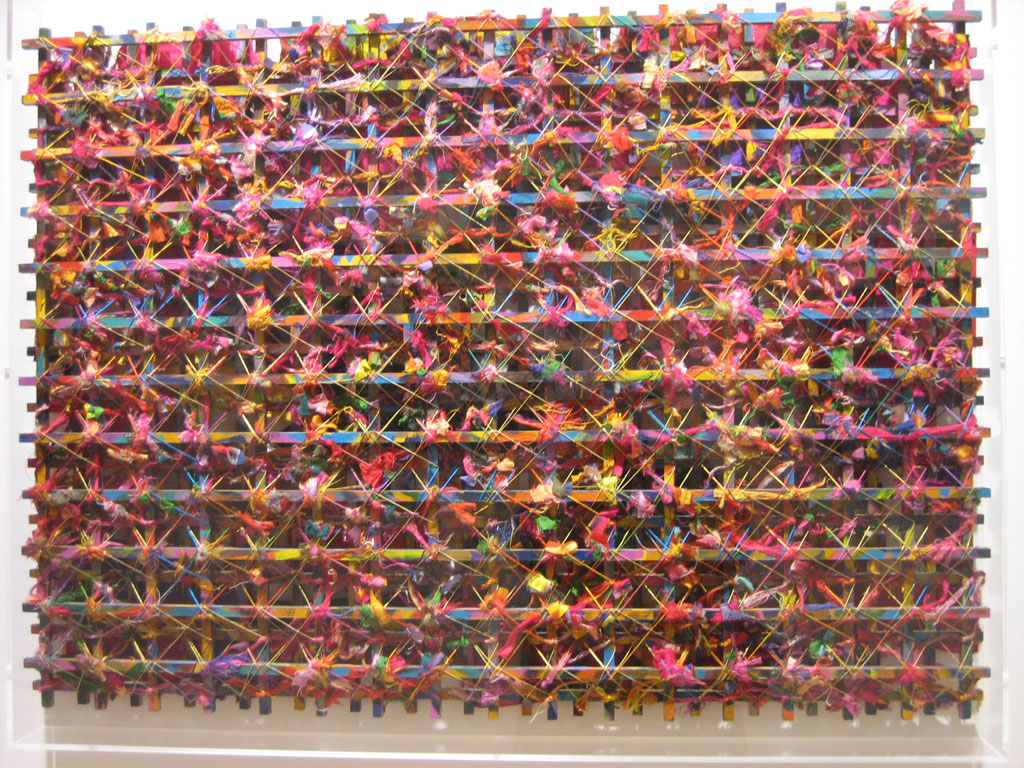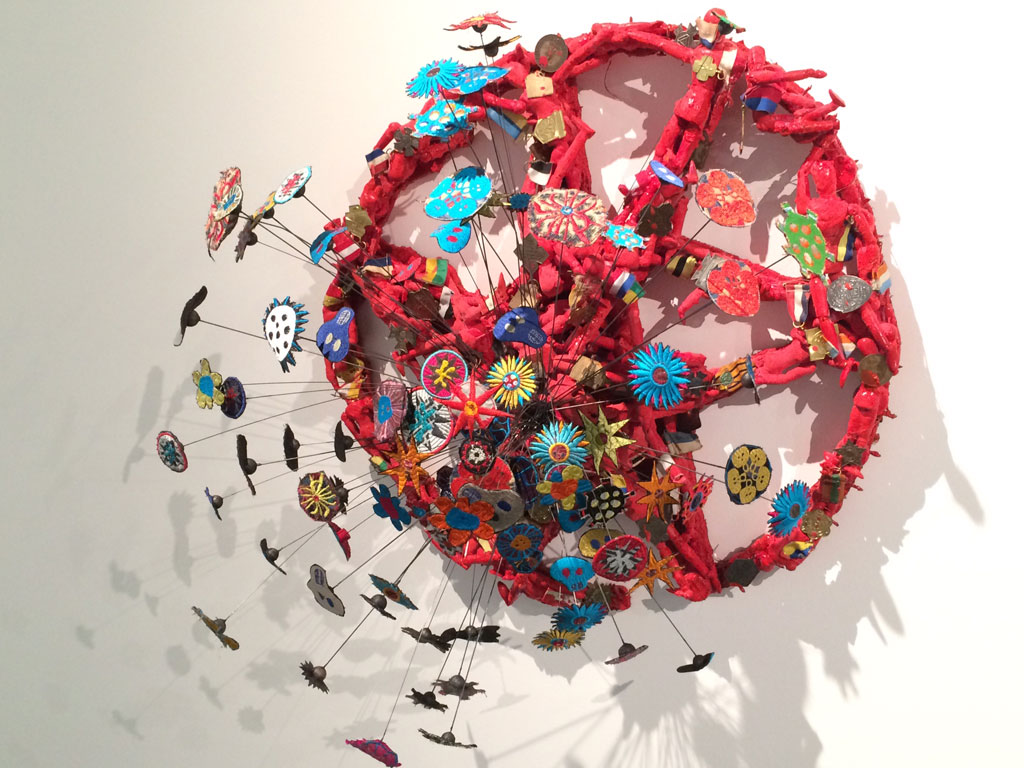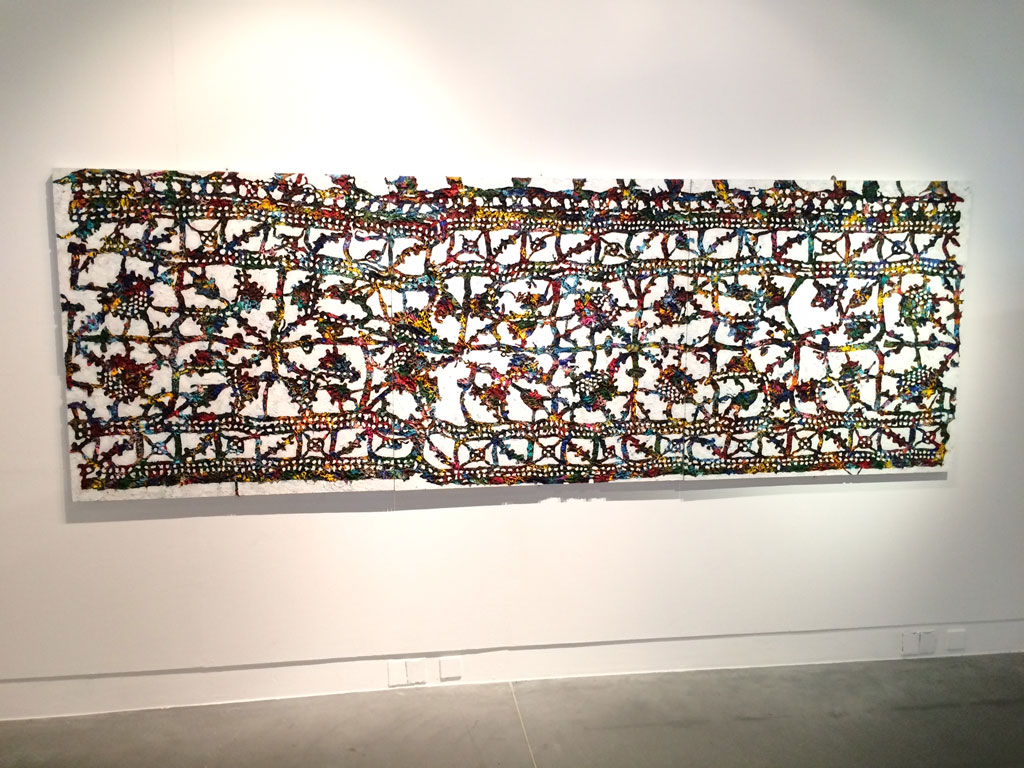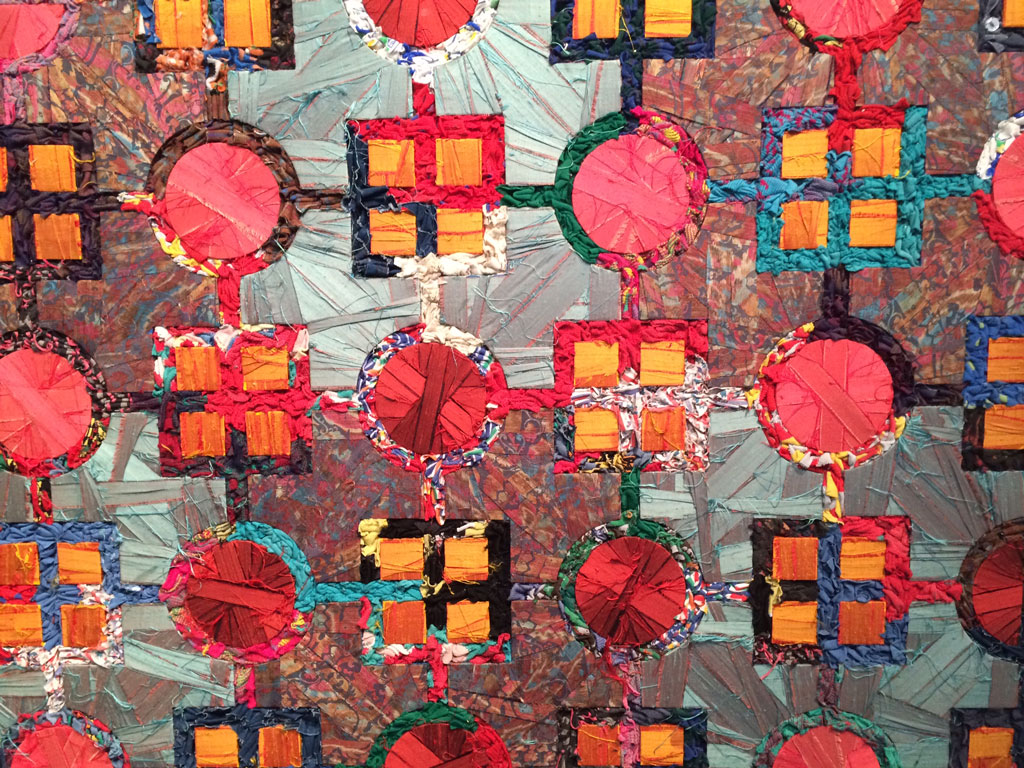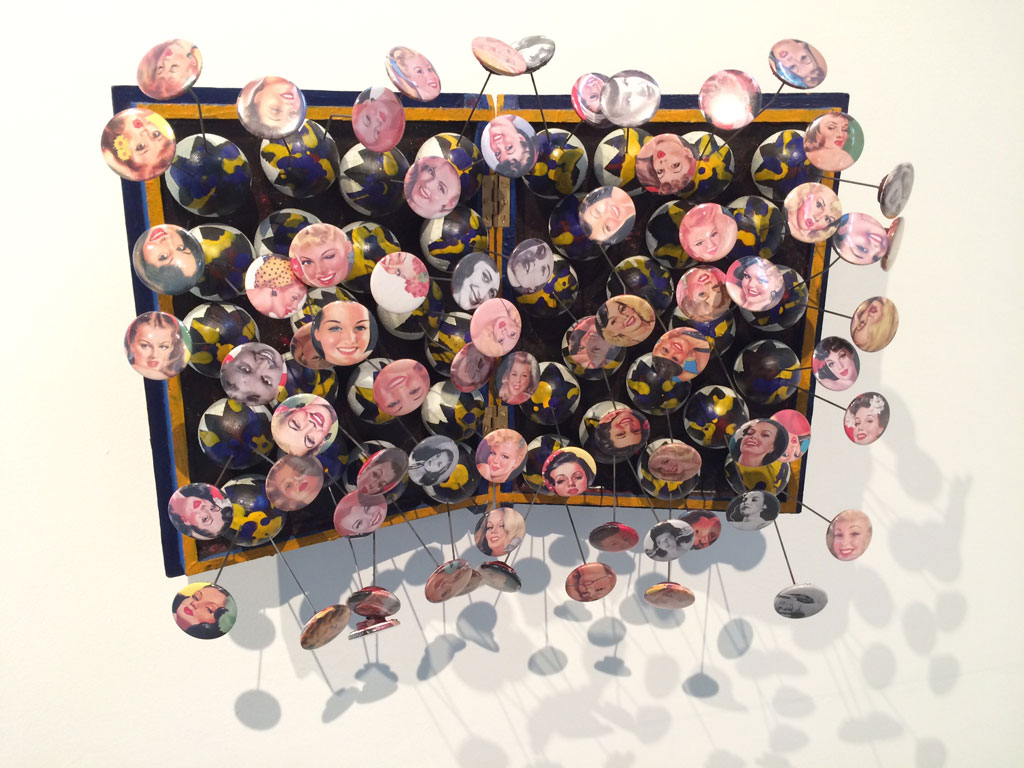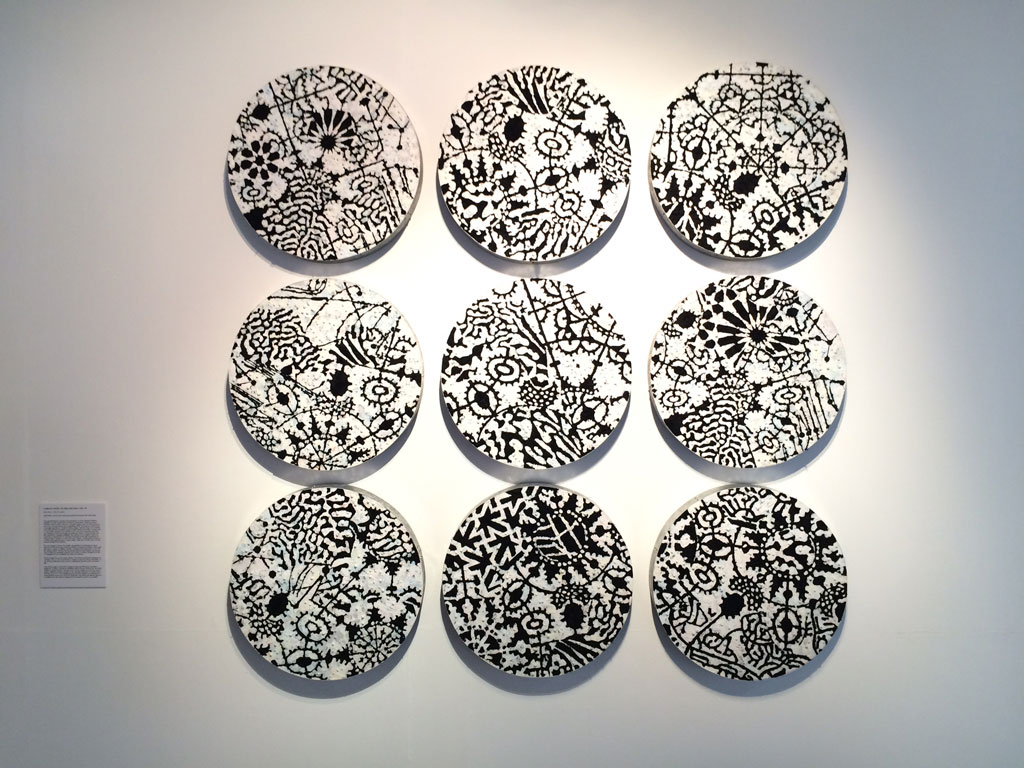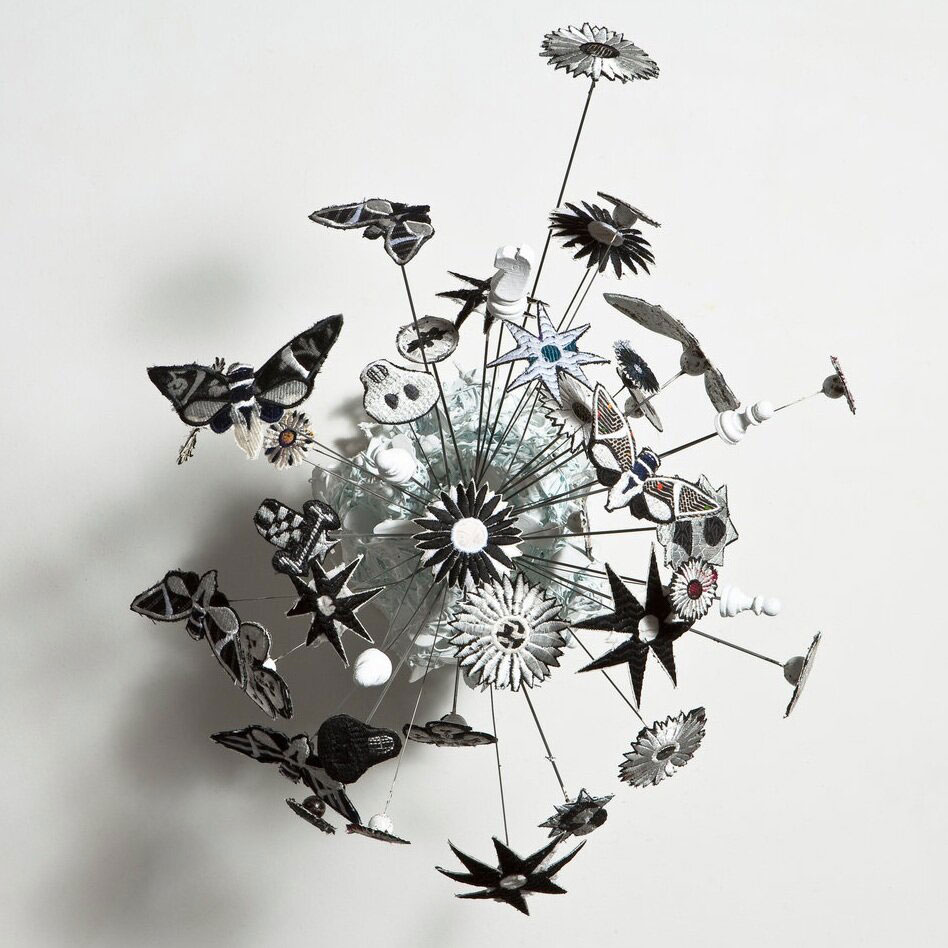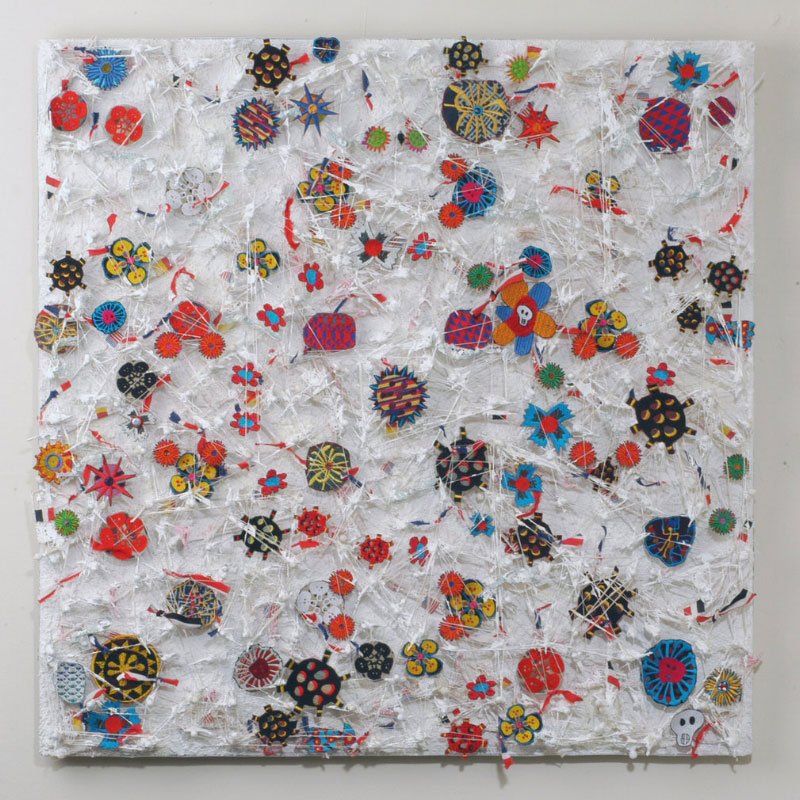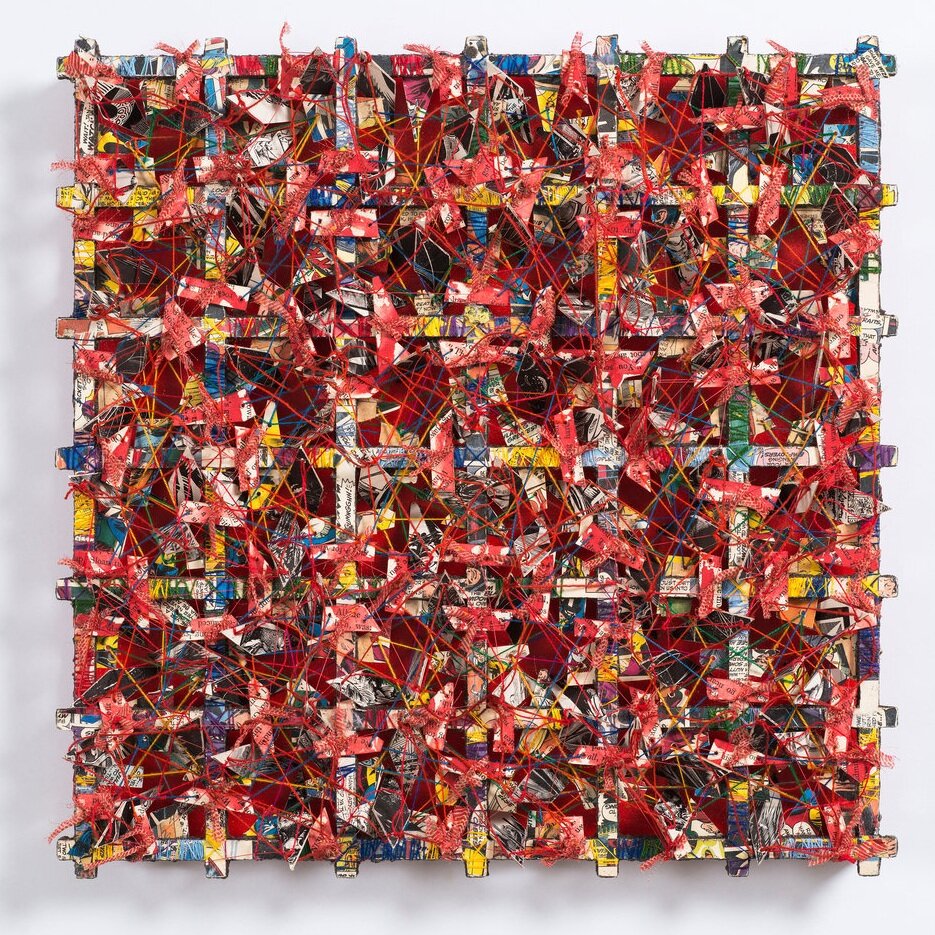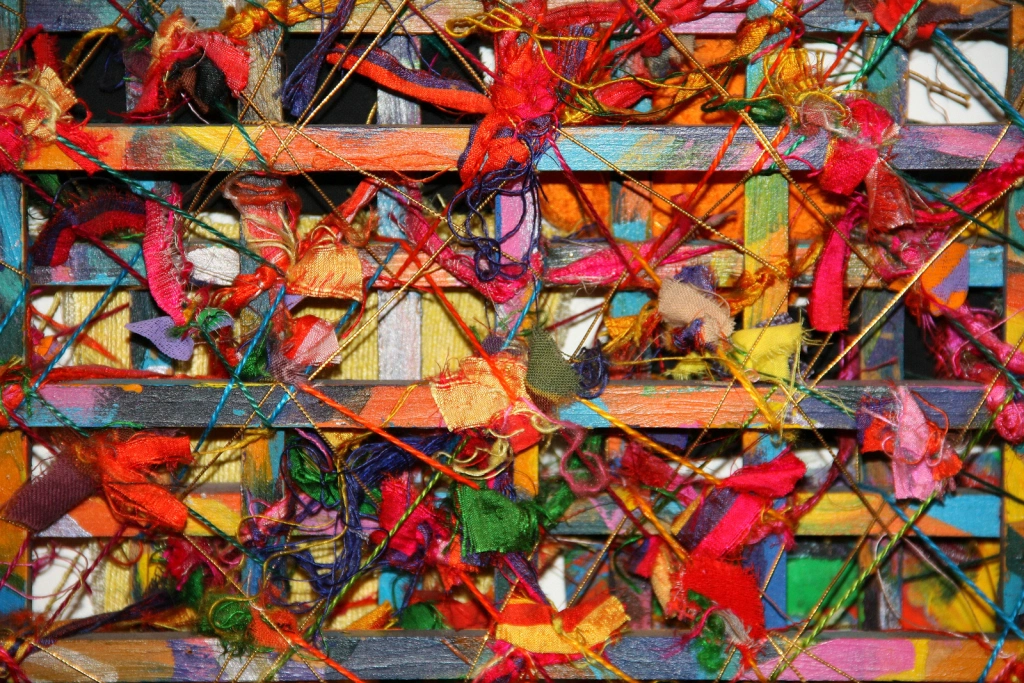ART-TRIBUTE:Weaving and other Practices… Michael Brennand-Wood
 We continue our Tribute with Michael Brennand-Wood, regarded as one of the most innovative and inspiring artists working in textiles. A defining characteristic of his work has been a sustained commitment to the conceptual synthesis of contemporary and historical sources, in particular, the exploration of three-dimensional line, structure and pattern. He has persistently worked within contested areas of textile practice, embroidery, pattern, lace and recently floral imagery.
We continue our Tribute with Michael Brennand-Wood, regarded as one of the most innovative and inspiring artists working in textiles. A defining characteristic of his work has been a sustained commitment to the conceptual synthesis of contemporary and historical sources, in particular, the exploration of three-dimensional line, structure and pattern. He has persistently worked within contested areas of textile practice, embroidery, pattern, lace and recently floral imagery.
By Efi Michalarou
 Born in Lancashire in the 1952, Brennand-Wood completed an art foundation course at Bolton College of Art and Design. Choosing to do a BA (Hons) in textiles at Manchester Polytechnic has since been described as “heroic” as he was the only man on the course. This choice was not too surprising , Brennand-Wood’s grandmother was an industrial weaver who taught him to sew and knit. With an engineer as a grandfather, you begin to understand the influence of structure and softness on his formative years. On completing his BA, Brennand-Wood continued to specialise in embroidery. It was the area of textiles least rooted in function and he wanted to extend the discipline by drawing in three dimensions with the linear use of thread. A defining characteristic of his work has been a sustained commitment to the conceptual synthesis of contemporary and historical sources, in particular the exploration of three-dimensional line, structure and pattern. He has persistently worked within contested areas of textile practice, embroidery, pattern, lace and recently floral imagery. Sites, which offer unbroken traditions, cross cultural interventions and a freedom to work outside the mainstream. He believes that the most innovative contemporary textiles emanate from an assured understanding of both textile technique and history. Michael has explored and developed his own techniques inventing many new and imaginative ways of integrating textiles with other media. Recent work inspired by the traditions of floral imagery have utilised computerised machine embroidery, acrylic paint, wood, glass and collage. Exploring the illusionary space between two and three dimensions, these works are colourful, dramatic, rhythmic and holographic in feel with intense detail that merges at a distance into strongly optical configurations. He was appointed Professor of Art – Politics in Ornament at Wolverhampton University in 2013.
Born in Lancashire in the 1952, Brennand-Wood completed an art foundation course at Bolton College of Art and Design. Choosing to do a BA (Hons) in textiles at Manchester Polytechnic has since been described as “heroic” as he was the only man on the course. This choice was not too surprising , Brennand-Wood’s grandmother was an industrial weaver who taught him to sew and knit. With an engineer as a grandfather, you begin to understand the influence of structure and softness on his formative years. On completing his BA, Brennand-Wood continued to specialise in embroidery. It was the area of textiles least rooted in function and he wanted to extend the discipline by drawing in three dimensions with the linear use of thread. A defining characteristic of his work has been a sustained commitment to the conceptual synthesis of contemporary and historical sources, in particular the exploration of three-dimensional line, structure and pattern. He has persistently worked within contested areas of textile practice, embroidery, pattern, lace and recently floral imagery. Sites, which offer unbroken traditions, cross cultural interventions and a freedom to work outside the mainstream. He believes that the most innovative contemporary textiles emanate from an assured understanding of both textile technique and history. Michael has explored and developed his own techniques inventing many new and imaginative ways of integrating textiles with other media. Recent work inspired by the traditions of floral imagery have utilised computerised machine embroidery, acrylic paint, wood, glass and collage. Exploring the illusionary space between two and three dimensions, these works are colourful, dramatic, rhythmic and holographic in feel with intense detail that merges at a distance into strongly optical configurations. He was appointed Professor of Art – Politics in Ornament at Wolverhampton University in 2013.



